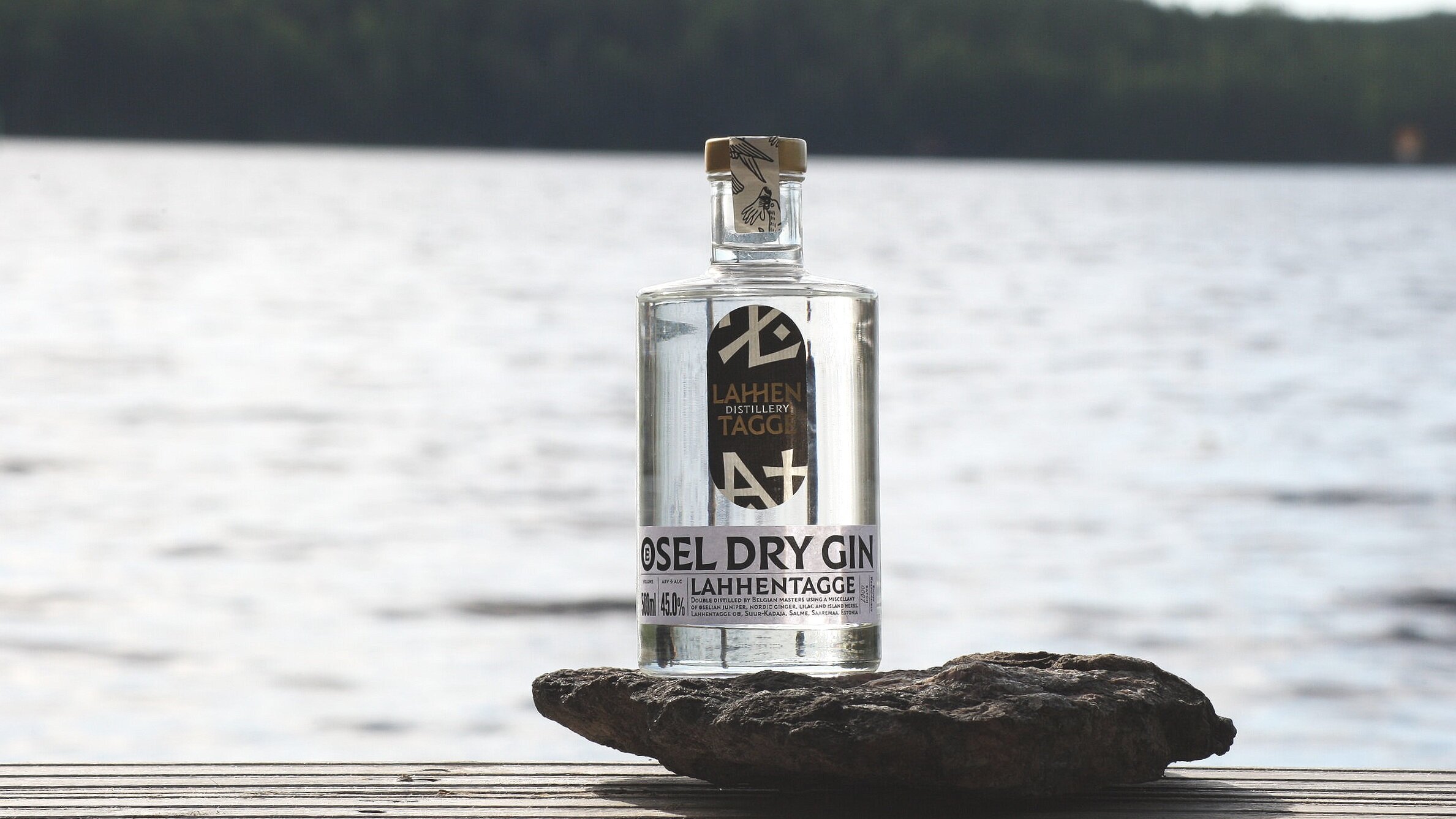10 Things You Didn't Know About Gin
Commonly known as spring’s power spirit, gin is one of the most consumed spirits in the world. An integral part of the iconic duo; gin and tonic, it is also mixed with a lot of classic cocktails. Gin has a very intriguing history, and below are ten things you probably did not know about this popular spirit.
1. Gin Originates From Holland: Even though gin is mostly identified with Britain, it actually originated from Holland. Its predecessor was known as genever, and was discovered by the Brits while fighting the Dutch in the Anglo-Dutch war of the 17th century. It can therefore be said that gin had its roots in war.
2. Dutch Courage: The term “Dutch Courage” was first used by the Brits. It was used to describe the consumption of gin by Dutch soldiers during this war. These soldiers consumed genever as a morale-booster before going on the battlefield to face the Brits. This prompted the Brits to adapt this drink as theirs.
Roots of gin are in pharmacy’s, photo from Barcelona
3. Gin Had Its Roots In Pharmacy: In the 17th century, gin was sold as an herbal medicine in Holland. It was prescribed for gallstones, gout as well as stomach and kidney diseases.
4. The Godfather of Gin: Franciscus Sylvius is regarded as the godfather of gin. He is a Dutch physician who invented genever in the 16th century. He created genever as a medicine to cure several ailments as listed above. It was then given to soldiers during the Dutch Independence War.
5. Gin Can Be Dry Or Sweet: Gin has variants; it is either sweet or dry, as in lacking sweetness. London gin, the most popular type is dry while other variants such as Plymouth gin are sweet.
6. Gin And Tonic: An interesting fact about this iconic cocktail is that it was invented as a cure for malaria. Tonic contains quinine, and as such was prescribed as a cure for malaria. The taste was however awful, and gin was added to make it taste better. This is how this amazing cocktail came to be.
7. London Gin Is Rarely Made In London: Gin unlike other spirits like tequila, cognac and scotch does not have geographical restrictions. The variant of the gin and not the place of production is what gave it its name.
8. The Philippines Consume The Most Gin: Even though Britain is the adoptive motherland of gin, they are not its highest consumers. The Filipinos consume more gin than the Brits. As a matter of fact, they account for close to half of the world’s total consumption of gin.
9. Made For Cocktails: Asides gin and tonic; gin is an important ingredient for several classic cocktails. They include Negroni, Tom Collins, Vesper, Singapore Sling, Silver Bronx, Gimlet, French 75, Hanky Panky, and Clover Club.
10. You Can Make Your Own Gin: Gin is almost like a flavoured vodka; therefore you can experiment at home. You simply need to infuse the vodka with juniper berries as well as suitable botanicals and spices of your choice.
Difference between Gin and Vodka
Gin and vodka are two of the most popular white spirits around. These clear liquors that form the basis of numerous cocktail drinks share several similarities.
While they share similarities, clear differences between the two drinks also exist. It is important to know the difference, to know which is more suitable for different mixes and cocktails.
What Is Gin?
The origin of gin can be traced back to 17th century Holland, where it was invented as a medicinal drink. Gin is flavoured liquor produced from the re-distillation of a neutral spirit along with juniper berries and other flavouring agents. Juniper berries are the prominent ingredient in every gin while flavouring agents vary from one gin to the other. These agents include botanicals and spices such as lavender, citrus peel, lemongrass, cucumber, rose and black pepper to mention a few. Juniper berries give gin a strong pine taste, while it gets its flavour from whatever agents it is distilled from.
Lahhentagge Gin by Lake in Finland
What Is Vodka?
Vodka is a neutral spirit, usually without a distinct aroma, colour or taste. Vodka is a colourless liquid which originated from Russia, in the 14th century. Vodka is referred from the word Voda (meaning water in Slavic languages). It is generally distilled from grains or potatoes. Other items it can be made from include wheat, corn, rye and grapes. Vodka, being a pure spirit, has a neutral taste, setting it apart from other spirits. It is one of the heaviest drinks in the world with its alcohol content typically at 40%.
Gin and Vodka
Gin and vodka have many similarities and differences. Among the similarities are; they are both clear spirits and that undergo distillations. Another similarity is that they are both good ingredients for cocktails. Some of the differences discussed below:
Taste: Although both drinks are clear and colourless, it is a different case when it comes to the palate. Gin has a distinctive herbal taste, while vodka is generally tasteless and neutral. Vodka is water-based, while gin is distilled with juniper berries and botanicals giving them their distinct flavours.
How It Is Served: For the best experience, vodka should be served chilled. It is vicious when extremely cold, giving it the perfect taste. Gin, on the other hand, can be consumed chilled or when it is not chilled. Its aromatic flavours give it a fantastic taste even when it is not chilled.
Classification: Gin can be classified as flavoured vodka. However, vodka cannot be referred to as a type of gin. Gin can be regarded as a vodka because it can be redistilled from vodka in addition to botanicals and spices.
All in all, both spirits are excellent drinks and great choices for a cocktail. As said, they are two of the most popular cocktail ingredients in the world.
Vodka is the crucial ingredient of cocktails such as Screwdriver, Bloody Mary, Moscow Mule, Black Russian, among others. Gin is central in the iconic Martini, White Lady, Vesper, Hanky Panky, Gin Rickey and more.
Why London Gin is Gold Standard of Gin Industry
Gin Bar in Brno, Czech republic
There are many styles of gin produced all over the world, but London Dry Gin stands out as the most common style. It is the gold standard for the gin industry worldwide.
The reason for this reverence of London Dry Gin can be attributed to its origin, the process of distillation and production, taste, as well as the consumption rate all around the world.
Origin of London Dry Gin
The 17th century was the era in which gin became popular. This was in the Anglo-Dutch war where Dutch soldiers took Genever (the earliest form of gin from Holland) before fighting. The British soldiers saw this, and took it back with them, leading to the emergence of the gin industry in the United Kingdom. The 1700s was an era of gin craze, the gin industry was moving, and everyone who had the means was producing gin.
There was no regulation on the production of gin at this time, and distillers were using crude methods producing low-quality gin containing harmful substances. Some producers even distilled gin in their bathtubs. The gin usually tasted unpleasant, and they masked the taste with artificial chemicals and dangerous colouring.
This came to an end with the invention of the Coffey Still in 1832, which allowed producers to distil better and cleaner gin. The style of gin created in London then was dry, and it became popular around the world, phasing out Genever as the modern gin.
Production of London Dry Gin
London Dry Gin, according to an EU law passed in 2008, must possess some qualities.
It must be produced with a neutral base spirit distilled to at least 96% ABV.
London Dry Gin must contain only natural ingredients. No artificial botanicals or spices should be added.
The botanicals must be added in the process of distillation.
Only water and a little amount of sweetener can be added after distillation. This ensures that the gin stays dry.
Even though it originated in London, this method of producing gin is widely used by small and big gin brands, all around the world. Also, as London Dry Gin is used very widely, not all gins fitting the definition, carry the category name.
For example, Ösel Dry Gin uses the ancient name of the island of Saaremaa instead of plain London. By definition, Ösel Dry Gin is a London Dry Gin which uses herbs mostly from the island of Saaremaa.
Taste
Along with the process of production, the taste is another reason why London Dry Gin is the gold standard of the gin industry. Juniper berry is in all types of gin, and London Dry Gin features it in abundance. Unlike Genever which has a predominant malty taste, London Dry Gin has the heavy piney taste of juniper berry. This is why London Dry Gin has replaced Genever as the hallmark of modern gin.
Also, the taste of London Dry Gin makes it a top choice for classic cocktails. It is no surprise that London Dry Gin is the most consumed type of gin around the world. It is used in most cocktails as well as Gin and Tonic. Some of the world’s biggest gin brands - including Bombay, Tanqueray, and Beefeater - produce London Dry Gin.
Gin botanicals: local or not?
When you try to compare 100 gins, many of them seem similar for a typical gin lover, but specialists see massive differences between them.
There are many similarities because the heart of all gins is the same - in essence, gin is a juniper-flavoured spirit. However, in addition to juniper, distillers use a wide variety of other botanicals to give their gin that unique taste.
Many gin makers import all their ingredients and claim they are combining the best herbs from all over the world.
At the same time, we can find most botanicals we need from around the home. We pick ourselves our juniper berries, birch leaves, wild thyme, lilac blossoms and several other herbs. In northern Europe, we could also use local fresh basil, rosemary, angelica, lemon verbena, blackcurrant leaf or rose petals.
Foraging in 2019 - Tarmo and Maarit are Heading to the nature to pick some herbs. Photo by Kristina Mägi


















